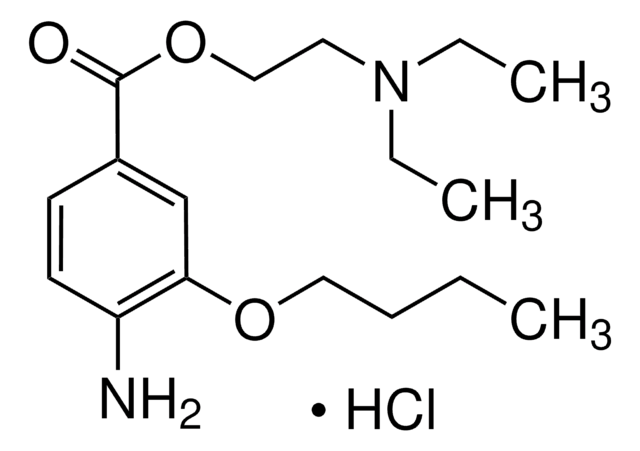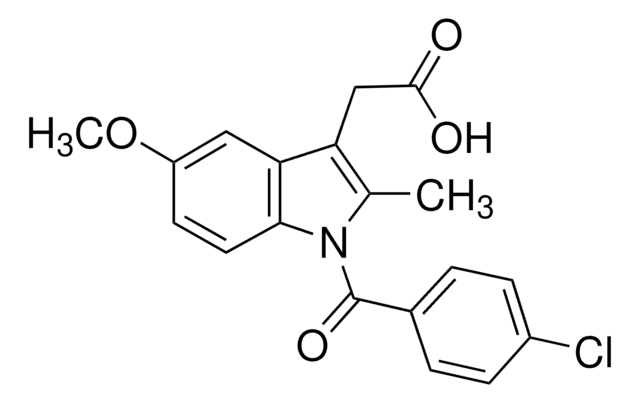B9050
Benoxinate hydrochloride
meets USP testing specifications
Synonyme(s) :
2-(Diethylamino)ethyl 4-amino-3-butoxybenzoate hydrochloride, 4-Amino-3-butoxybenzoic acid diethylaminoethyl ester, Oxybuprocaine hydrochloride
About This Item
Produits recommandés
Agence
USP/NF
meets USP testing specifications
Niveau de qualité
Forme
solid
Application(s)
pharmaceutical (small molecule)
Chaîne SMILES
Cl[H].CCCCOc1cc(ccc1N)C(=O)OCCN(CC)CC
InChI
1S/C17H28N2O3.ClH/c1-4-7-11-21-16-13-14(8-9-15(16)18)17(20)22-12-10-19(5-2)6-3;/h8-9,13H,4-7,10-12,18H2,1-3H3;1H
Clé InChI
PRGUDWLMFLCODA-UHFFFAOYSA-N
Informations sur le gène
human ... SCN10A(6336) , SCN11A(11280) , SCN1A(6323) , SCN2A(6326) , SCN3A(6328) , SCN4A(6329) , SCN5A(6331) , SCN7A(6332) , SCN8A(6334) , SCN9A(6335)
Vous recherchez des produits similaires ? Visite Guide de comparaison des produits
Code de la classe de stockage
13 - Non Combustible Solids
Classe de danger pour l'eau (WGK)
WGK 3
Point d'éclair (°F)
Not applicable
Point d'éclair (°C)
Not applicable
Équipement de protection individuelle
dust mask type N95 (US), Eyeshields, Gloves
Faites votre choix parmi les versions les plus récentes :
Déjà en possession de ce produit ?
Retrouvez la documentation relative aux produits que vous avez récemment achetés dans la Bibliothèque de documents.
Notre équipe de scientifiques dispose d'une expérience dans tous les secteurs de la recherche, notamment en sciences de la vie, science des matériaux, synthèse chimique, chromatographie, analyse et dans de nombreux autres domaines..
Contacter notre Service technique






